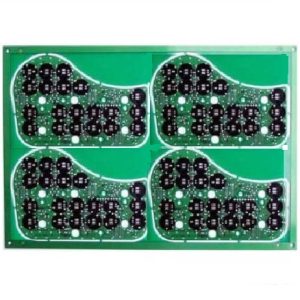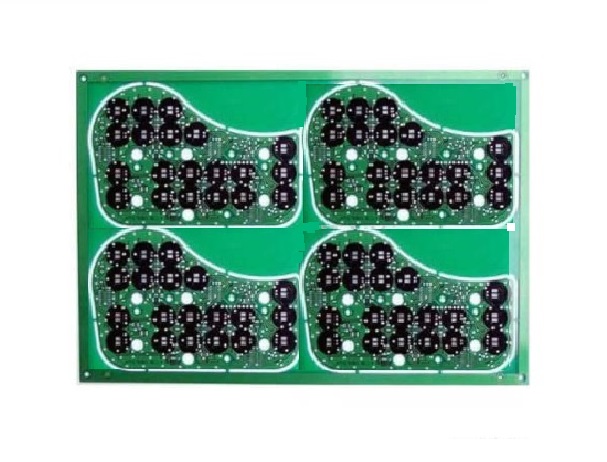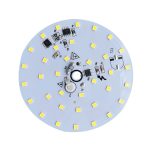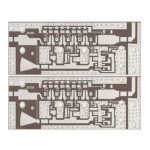Carbon ink PCB refers to the PCB printed with carbon ink. Printing carbon ink is a relatively common surface treatment process, commonly used in single-sided and double-sided panels. Using screen printing technology, in the specified position printed on the carbon ink, after the oven curing test OK to form a qualified with a certain resistance value of the carbon film instead of the original resistance components. The production process is similar to screen printing, printing carbon ink has better conductive properties.

1. Composition of carbon ink
Carbon ink is mainly composed of synthetic resin, hardener, and toner. Synthetic resin plays a bonding role (equivalent to the carrier).
Hardener plays a curing role, and carbon powder plays a conductive role (can also add graphite powder, but the cost is high). Some suppliers to make the PCB have a lower resistance value and higher conductivity and will add a small amount of silver ink in the carbon ink.
2. Carbon ink PCB production capacity
(1) carbon ink gap: because the carbon ink has good conductive properties, the finished board on the carbon ink needs to have a certain gap to ensure that there is no short-circuit, usually requires a minimum finished product 8mil gap (HOZ bottom copper), 12mil gap (1-3OZ bottom copper), if the production of film can increase the gap, try to increase the finished product gap to ensure that there is no short-circuit.
(2) Carbon ink minimum alignment tolerance: +/-6mil
Carbon ink window size and gap with copper PATTERN: Considering the alignment tolerance and ink seepage and other factors, carbon ink than copper PAD unilateral needs to be larger than 6mil (HOZ bottom copper), 8mil (1-3OZ bottom copper) to ensure that the copper is not exposed. Correspondingly, the carbon ink window from the surrounding copper PATTERN also need to have 6mil (HOZ bottom copper), and 8mil (1-3OZ bottom copper) of the gap, to avoid carbon ink covering the surrounding copper PATTERN, thus avoiding short circuit.
(3) carbon ink thickness: a screen printing carbon ink thickness: 0.3-1.0mil, a screen printing carbon ink thickness tolerance: +/-0.3mil; if the carbon ink thickness of 1.0mil or more, the need for the second return to print carbon ink, the second return to print carbon ink thickness: 1.0-2.0mil, the thickness tolerance: +/-0.4mil, the second return to print carbon ink Phillips than the first screen printing carbon ink phillips unilateral Smaller than 3mil, so the MI needs to write two sets of tools.
(4) jigsaw puzzle: production size as far as possible to design less than or equal to 16 “X18”; if affected by factors such as plate utilization, the production size is greater than 16 “X18”, it is necessary to cut the plate in the white lettering after the process (before the carbon ink), pay attention to the LOT-CARD in the MI on the note, and pay attention to the design of the cut plate line. When designing the production jigsaw, try to consider the consistency of the carbon ink direction to facilitate production control.
3. Notes
(1) The boards with surface treatment of immersion silver and immersion tin should not be printed with carbon ink. Reason: the surface treatment of immersed silver, and immersed tin is easy to be oxidized, to avoid oxidation and avoid printing carbon ink to avoid rubbing the surface of the flower, must be printed after the carbon ink and then over the immersed silver, immersed tin process, when over the immersed silver or immersed tin process, the printed carbon ink area will also be immersed in silver or tin.
(2) The original board with keys must be shrunk.
(3) Baking temperature should be from low to high.
(4) Ink dilution must be done according to the requirements.
Contact OPCBA.COM to fabricate your carbon ink PCB.





